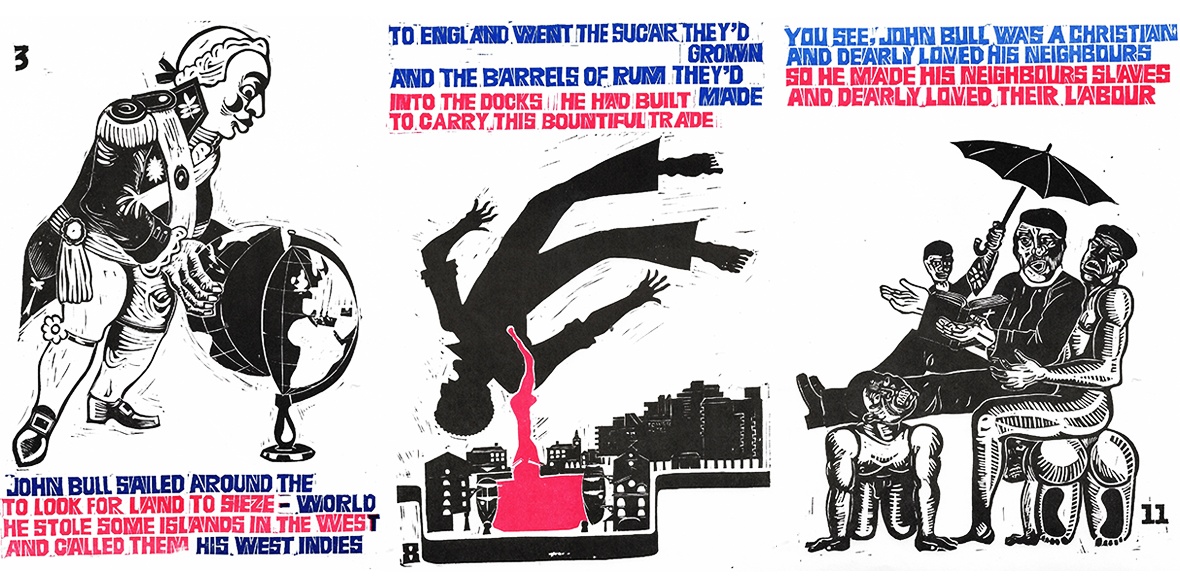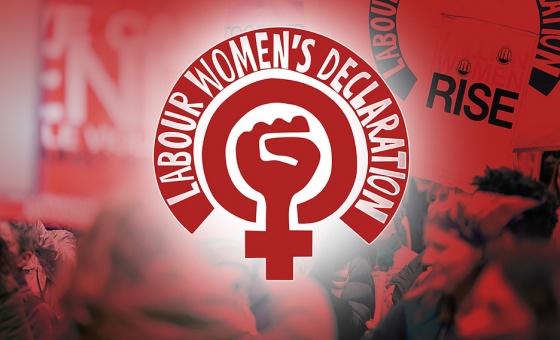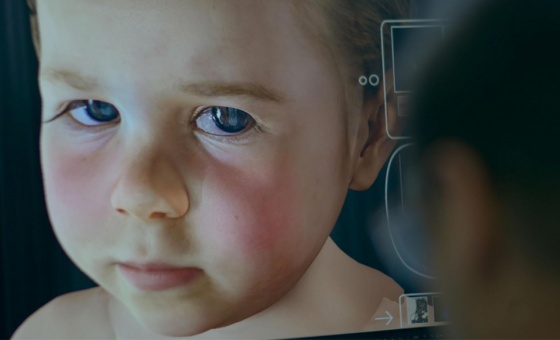This is the last article you can read this month
You can read more article this month
You can read more articles this month
Sorry your limit is up for this month
Reset on:
Please help support the Morning Star by subscribing here
John Bull — linocuts and sculptures by Jeff Perks to a poem by Michael Rosen
Green Man Gallery, Buxton, Derbyshire
JOHN BULL is a unique exhibition by visual artist Jeff Perks together with the poet Michael Rosen and in collaboration with the pupils of Litton Primary School, Buxton.
Children’s author Michael Rosen wrote his poem John Bull to explain how slavery came about and how much of Britain’s wealth and the capital for its industrial revolution came from slavery, a fact that is still today barely acknowledged in mainstream histories. This striking exhibition of original linocuts and sculptures provides a visual counterpoint to Rosen’s words and includes work created by pupils from Litton Primary School in response to the poem.
Perks’s graphic, black and white linocuts are an ideal rapport to Rosen’s powerful words. His works give symbolic resonance to the enormous wealth generated by the slave trade and slave exploitation on plantations in America and the Caribbean.
About the sculptures, Jeff Perks says: “Working with the school children was exciting and the results are interesting. The children made clay figures, representing the slaves, to be placed in a sardine can I made to simulate the loading of a slave ship.” This sculpture is based on the well-known, infamous woodcut illustration of a ship packed full of slaves, published in 1808.
Another sculpture is of a roofless factory full of white clay figures – the workers. “I’m trying to make the connection between black slaves and wage slaves,” Perks adds, “to emphasise the similarity and connection between black slave-generated wealth and the exploitation of workers here during the rise of 19th-century capitalism.” The visual similarity between the factory and the slave ship sculptures is not fortuitous.
Historians estimate that approximately 472,000 Africans were kidnapped and brought to the North American mainland between 1619 and 1860. Of these, nearly 18 per cent died during the transatlantic voyage. Known as the “middle passage,” this sea voyage could range from one to six months, depending on the weather. On large ships, several hundred slaves would be packed below decks. Branded and chained together, they endured conditions of squalor, disease and starvation claimed many lives.
The exhibition is part of the Buxton Festival Fringe and is lead by the question: What does freedom mean to you? You can follow the Freedom Trail around the gallery to discover how the Resident Artists have answered this question. A thought-provoking series of paintings, drawings, printmaking, ceramics and photography are displayed alongside the gallery’s vibrant Summer Collection and are presented as a counterpoint to the guest exhibition, John Bull.
The gallery is printing a number of single sided copies of Rosen’s poem with Perks’s linocuts to sell at an affordable price.
Runs July 3 to August 28, admission free. For more information see: buxtonfringe.org.uk











